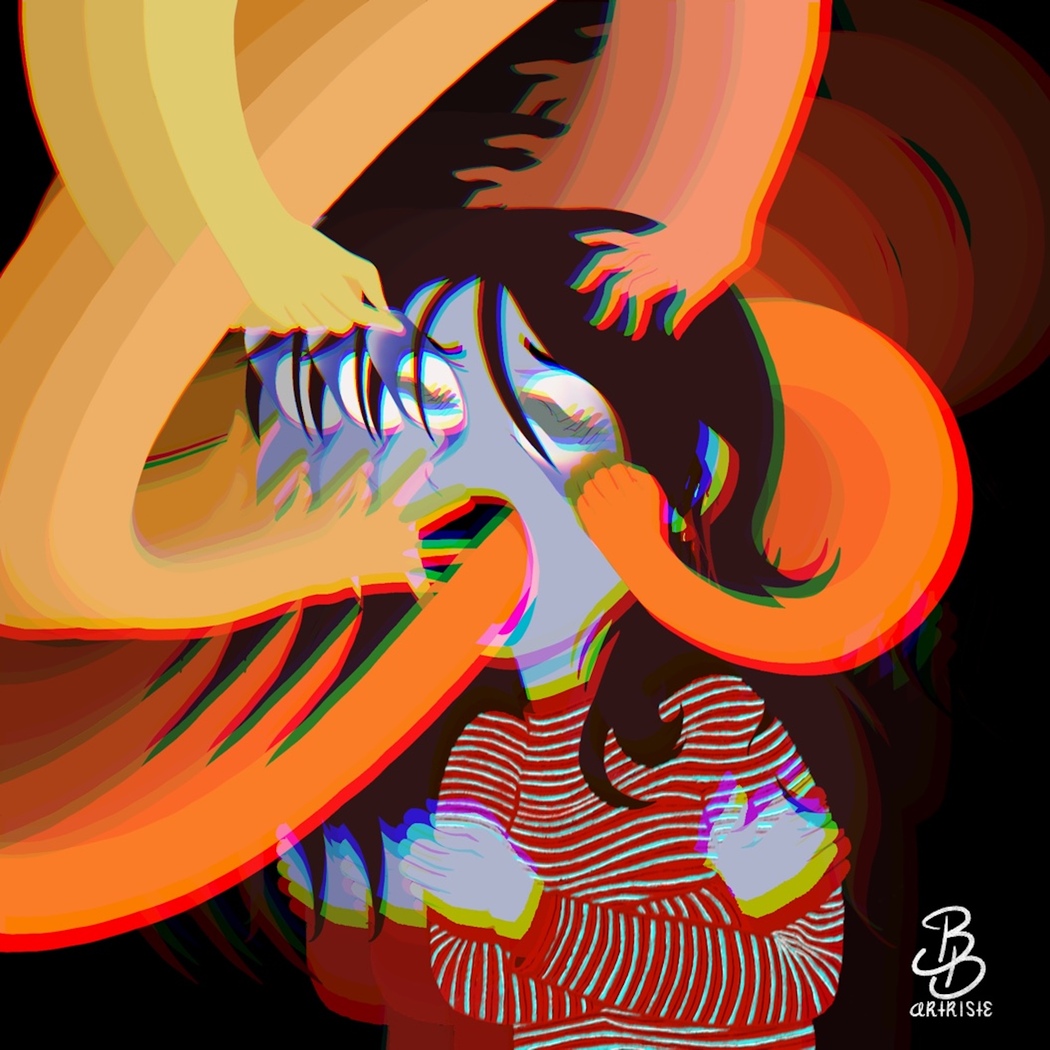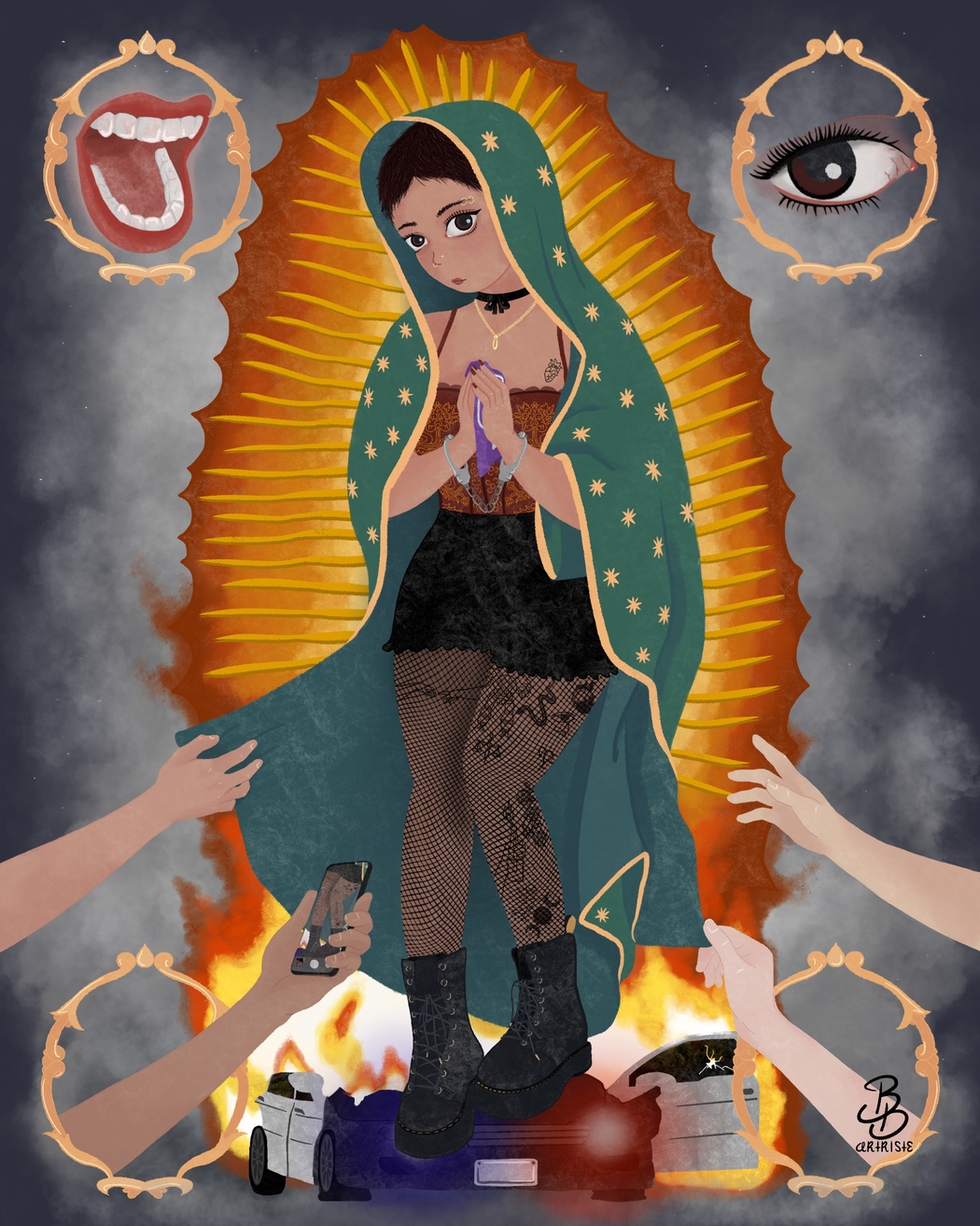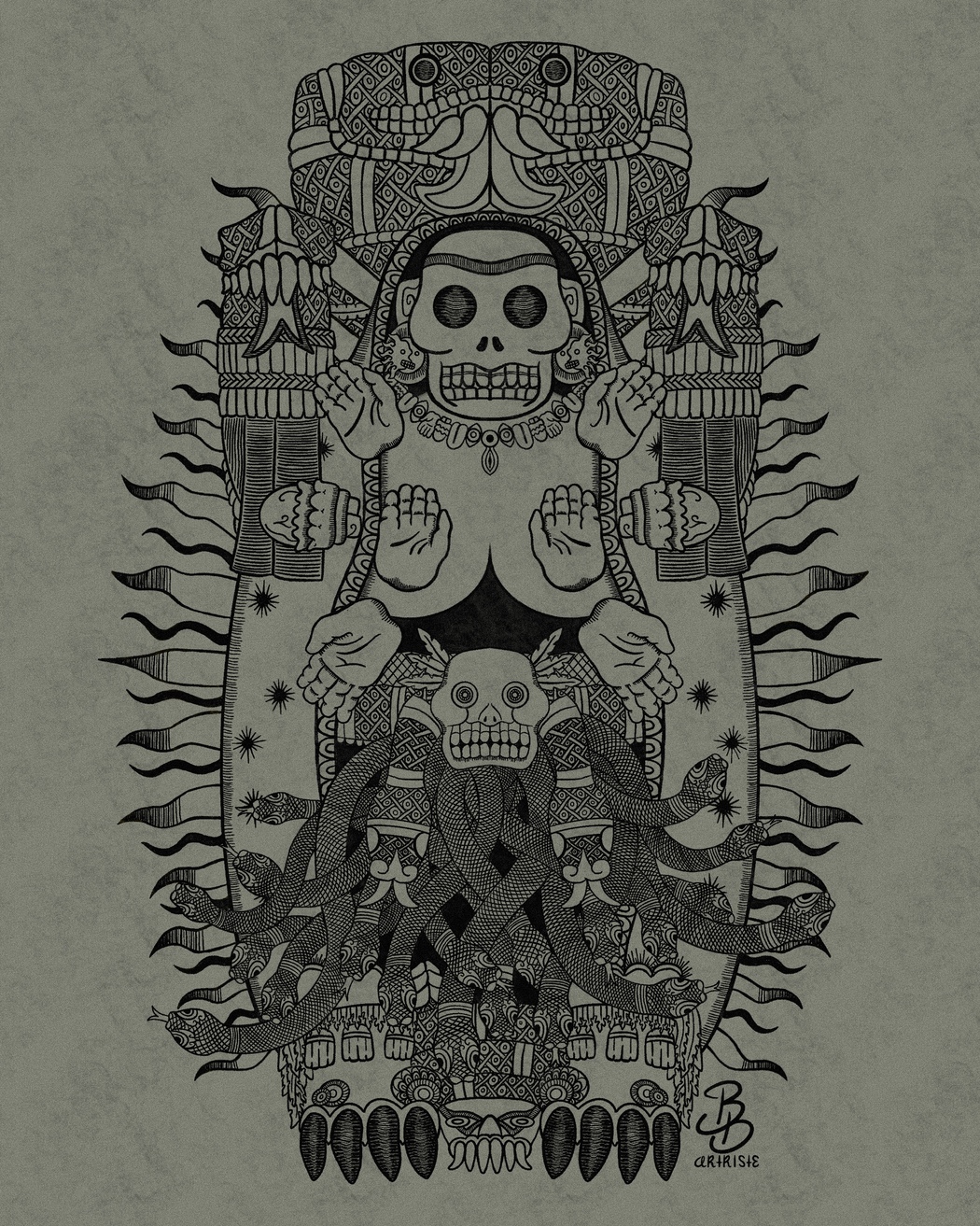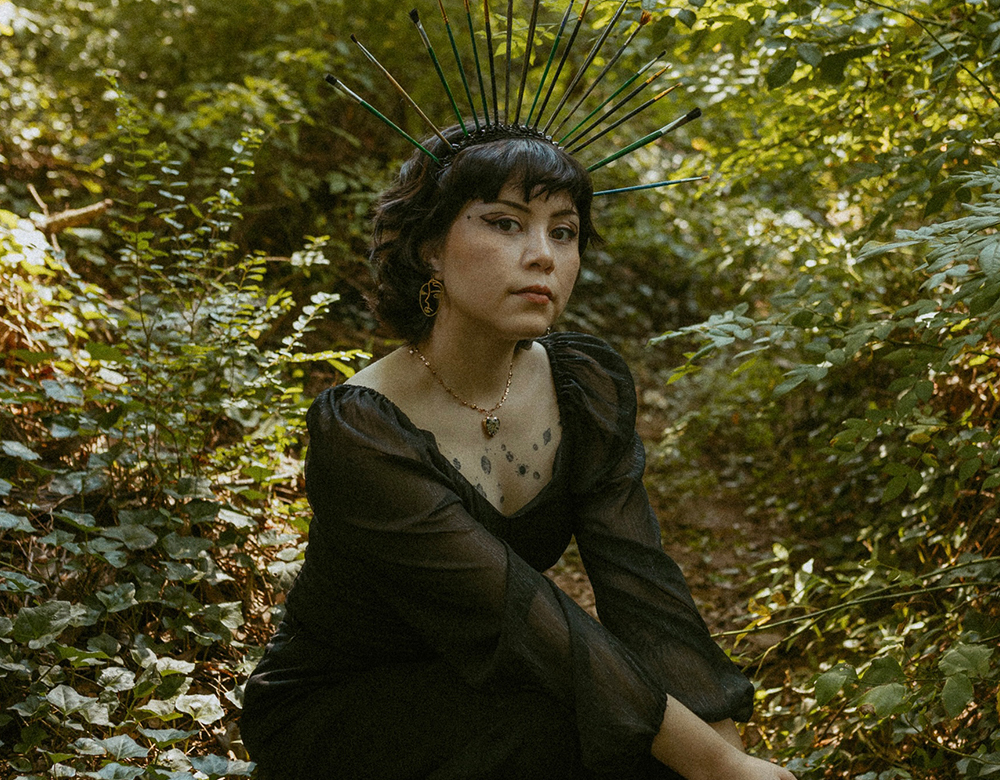Blanca Becerra
Can you share how your upbringing in Guanajuato, Mexico, shaped your artistic vision and practice?
Anywhere I went in my hometown, history was blended into daily life. Whether through the state-wide government slogan declaring Guanajuato as “the cradle of independence” or the spaces I inhabited. The place where I first took painting classes was once a military barracks during the Mexican Revolution, and the museum where I later studied art had been the home of the siblings Jose y Tomas Chavez Morado, renowned Mexican muralist and sculptor. As a child I may have taken these factors for granted, but as an artist I seek to honor and give them the recognition they deserve. My heritage is something I embrace with pride and gratitude. However, my perspective is not solely one of admiration. As a woman who was raised in Mexico, I cannot ignore the harsh realities that many women in my country face daily. Realities that I, due to my relative privilege, did not have to endure in the same way. This awareness compels me to use my artistic platform to acknowledge their struggles, and amplify their voices. Through my work, I hope to channel my experiences and heritage into a dialogue that resonates beyond my own story.
Your work explores the tension between traditional Mexican culture and the experience of living in the United States. How do you navigate these two identities in your art?
Nostalgia plays a significant role in my work. I often reflect on childhood memories that are deeply ingrained in Mexican culture but absent from my surroundings in the United States. Since moving, I’ve found that solitude has become an unexpected but valuable part of my creative process. Where I grew up, daily life is filled with social interactions such as greeting neighbors on the street, sharing conversations with family and friends throughout the day, and attending community events more often. In contrast, moments of solitude are more frequent in my life in the U.S. This alone time has allowed me to be more in tune with my emotions, providing the space to process feelings I may not have fully confronted before. Paradoxically, the physical distance from Mexico has deepened my connection to it. The quiet introspection I experience here allows me to explore my memories and cultural identity more profoundly. Lastly, I became aware of negative stereotypes after moving here, and relating to others was a challenge. I wasn’t Chicana and I resented the stereotypes often associated with being Mexican. This tension fueled my desire to reclaim my heritage on my own terms. It motivated me to learn more and share aspects of my culture that show a non-stereotypical Mexican artist.
 Blanca Becerra | I Thought You Wanted Me | 2021
Blanca Becerra | I Thought You Wanted Me | 2021
Many of your pieces challenge stereotypes about Mexican women. What specific stereotypes are you aiming to address, and why is this important for you?
Many girls in Mexico are raised with the expectation of pleasing everyone around them. We are taught to set aside our own needs, silence our voices, and navigate the world with obedience. Boundaries are nonexistent, and trusting others can be a risk. From an early age, we are told to obey “the man of the house,” whether that is our father or the next male figure in line. We are raised to be “decent women.” I remember being constantly reminded to sit properly, to lower my voice, to never talk back, and to learn domestic skills, all lessons that were never imposed onto my brothers. Speaking my mind, standing up for myself, and taking up space the way men naturally do makes me an outcast, an “indecent” woman. But I know I am not alone. Through my work, I want to challenge these deeply ingrained patterns and offer my solidarity to other women who refuse to conform. I want them to know they are not wrong for asserting themselves, no matter how much people try to convince them otherwise. One of the most painful realities of this cycle is when other women uphold these patriarchal norms, shutting down those who dare to deflect. I refuse to be that woman.
How do the mysticism and spiritual traditions of your homeland influence your artistic expression? Can you give an example of how this manifests in your work?
Mexico is infused with mysticism, where an inherent predisposition to the supernatural coexists with deep-rooted Catholic devotion. Stories of witches and curanderos (traditional healers) are as prevalent as ever. I find this coexistence both contradictory and awe-inspiring, how we seamlessly blend multiple beliefs together, shaping them into something that becomes an integral part of our daily lives. I was raised Catholic, but some of our traditions are a fusion of pre-Hispanic and Catholic rituals, evolving over time and varying across regions. It is common to hold various rituals for religious or spiritual reasons, however, not many people question their origins. As I delved deeper into their meanings, I developed a newfound appreciation for their significance. This new understanding inspired me to incorporate these traditions into my artwork, not only as a form of homage but also to highlight their relevance in modern times. One example is my depiction of La Catrina, a skeletal lady dressed in elegant garments synonymous with Día de los Muertos. As I learned the history of this image, I explored the symbolism of altars and each offering placed upon them. In my artwork, I sought to honor these elements while also making a contemporary statement. Alongside the traditional offerings, I included a self-defense keychain set. La Catrina is, after all, a Mexican woman, but in today’s reality, she must be prepared for the worst.
 Blanca Becerra | Mi Hija Es Una Santa | 2022
Blanca Becerra | Mi Hija Es Una Santa | 2022
You mention that art became a language for everything you were taught to silence. How does this theme of silenced emotions and repressed identity appear in your work?
More than simply depicting emotions, I use the process of creation to understand them. Naming my feelings does not come naturally to me and instead, I often find myself caught in a cycle of repression, rumination, then eventually, acceptance. Through the process, I give form to these internal struggles, translating them into visual narratives that reflect my experience. For example, my drawing Shame captures a moment of profound vulnerability. It was created during a time when I had just accepted I no longer held the same religious beliefs I had as a child. This realization left me feeling lost and alone. I was angry at myself for not living up to my parents’ expectations, for what felt like abandoning them in their faith. I carried a sense of guilt, feeling ungrateful and ashamed. In the piece, I depict myself curled into a fetal position, with my hair growing around me, whispering the thoughts I wished to silence, pulling me into a void. I focus on how emotions manifest in my mind and body, turning them into something tangible. While these emotions are often uncomfortable, they grant me a better understanding of myself, reshape my perspectives, and, ultimately, accept them as part of the human experience. In doing so, my art becomes a liberating act and a way to remind myself and others that we are never truly alone in our struggles.
The separation from your culture and family during your formative years had a profound impact on you. Can you speak more about how this experience influenced your artistic journey?
When I first began developing my artistic skills, I wanted desperately to please my parents with my artwork. They were, after all, investing their time and money in me, and I felt an obligation to create only beautiful art. This mindset changed when I moved to the United States. In those early years, no amount of drawing or creating could ease the profound longing I felt for my family. Everything changed when I entered high school and met an art teacher who challenged my approach. One day, as I perfected a painting, he walked up to me and simply said, “Make it ugly.” At the time, I didn’t fully understand why he would encourage such a thing since I still believed art had to be aesthetically pleasing. As time passed, I became progressively upset with my situation. I couldn’t fully express to my parents how I felt, nor could I seamlessly assimilate into this new culture while still holding onto my own. In moments of solitude, I began to fill my notebooks with scribbled, distorted faces of people crying or screaming. Yet, I would crumble them up and throw them away because they reflected emotions I believed I wasn’t supposed to show. Over time, however, these sketches evolved into larger, expressive paintings with dark shadows intertwined with bursts of color, embodying my need for perfection in a whirlwind of unresolved emotions. As the years passed, I embraced darker themes, exploring feelings of shame, rejection, and loneliness. If I wasn’t making my art “ugly”, I was at least allowing space for “ugly” emotions.
 Blanca Becerra | Tonantzin Coatlicue | 2023
Blanca Becerra | Tonantzin Coatlicue | 2023
You reinterpret traditional Mexican imagery in your art. How do you approach deconstructing these cultural symbols and reimagining them through your lens?
When reinterpreting traditional Mexican imagery, my priority is to learn as much as possible about their origins and significance, to then make my own convictions without being disrespectful. I then relate them to my personal life and reflect on how they have shaped me or how they might resonate with others. A prime example of this approach is a set of two artworks I call Las Dos Tonantzin (The Two Mothers). The concept is rooted in the story of Our Lady of Guadalupe, who is said to have appeared to an Indigenous man, playing a pivotal role in the conversion of his people to Catholicism. However, I later discovered that this apparition took place on the site of the former temple of Tonantzin Coatlicue, the Mexica deity of fertility and destruction. Our Lady of Guadalupe is, in a way, a reimagined version of Coatlicue, an adaptation of ancient spiritual beliefs to fit a new era. Through my eyes, these two figures are a continuation of the same belief, transformed to meet the spiritual needs of their time. By reinterpreting these already powerful symbols, I turn them into a call to action, conveying messages of resistance, resilience, and relevance to modern struggles.


Leave a Reply